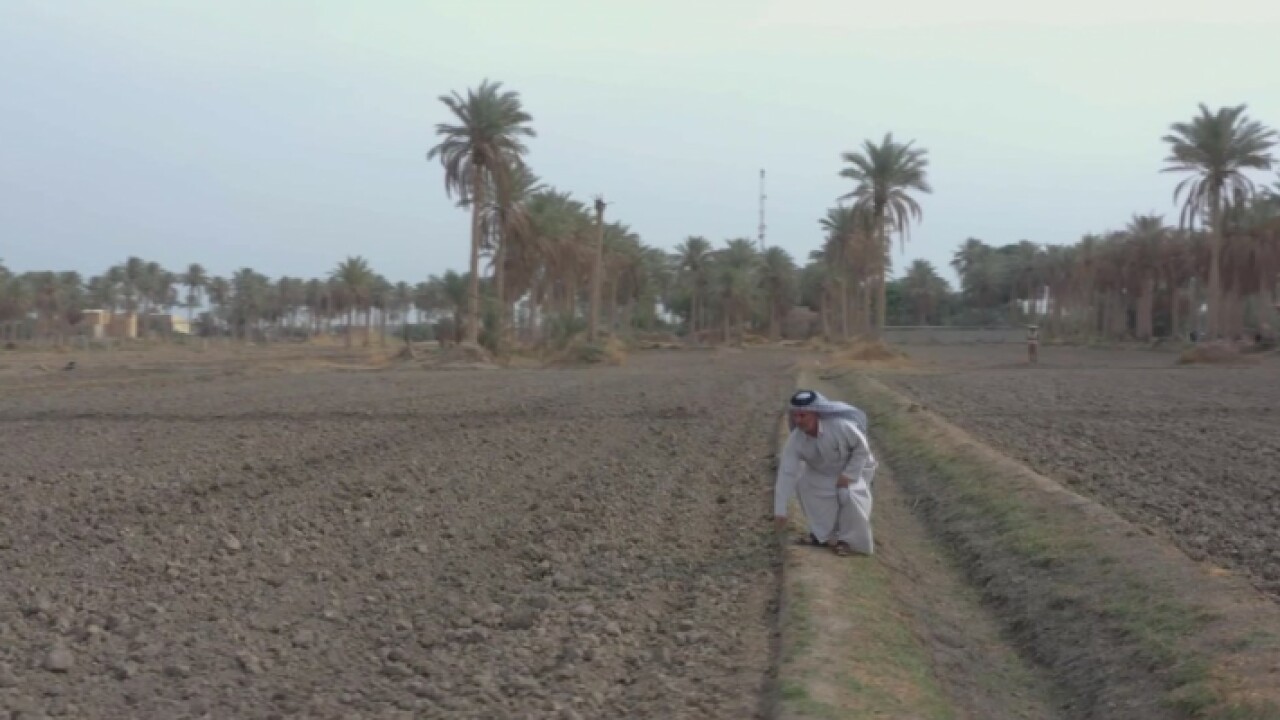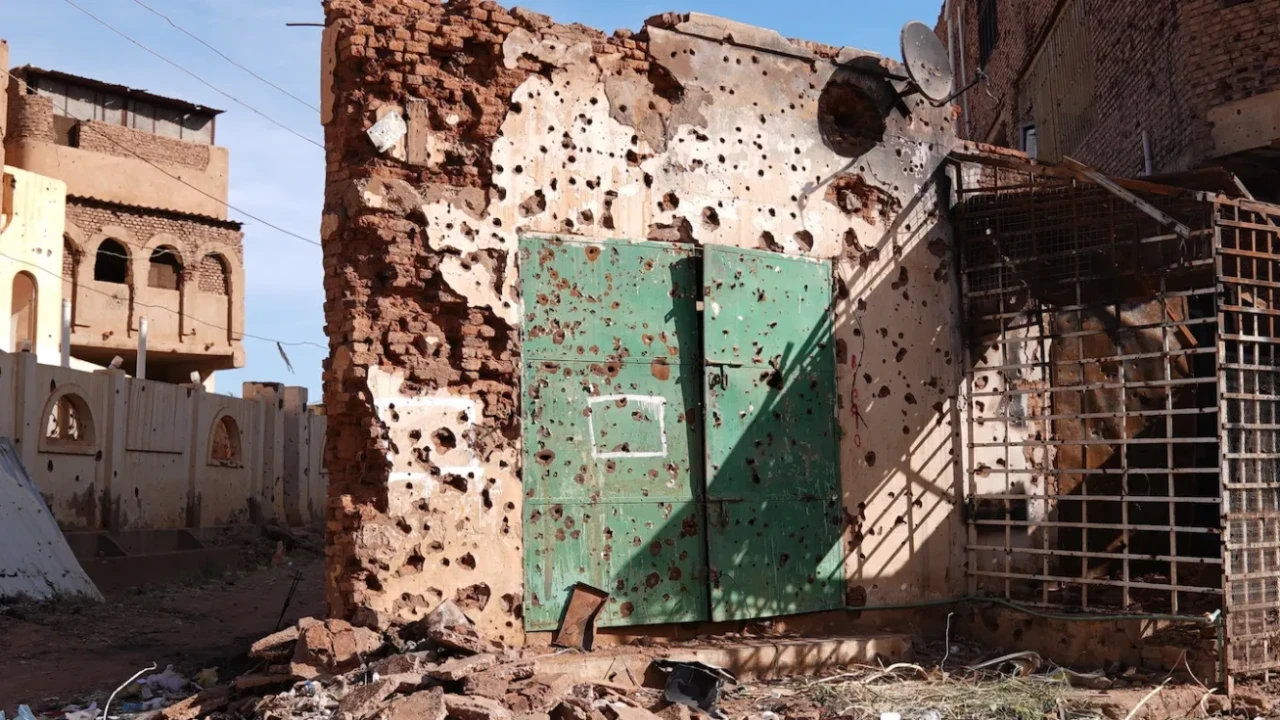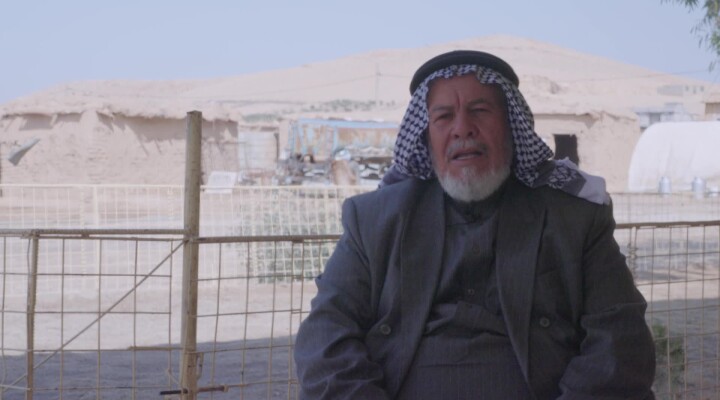Near And Middle East: Combined Effects of Climate Change and Armed Conflict Aggravate Humanitarian Needs

This is a modal window.
In Iraq, Syria and Yemen, the effects of climate change are being amplified by the consequences of armed conflict. Communities that suffered the direct effects of conflict are disproportionately impacted, with the most vulnerable far from ready to adapt to climate change’s effects.
In Yemen, it is not uncommon for people to flee their homes seeking safety from conflict only to then leave that new location because the land cannot be farmed. Three out of four Yemenis rely on agriculture and livestock for their survival, and the climate crisis is pushing communities already reeling from over eight years of conflict to the breaking point. Yemeni farmers have seen their livelihoods destroyed by extreme drought, devastating flooding, and grinding conflict.
“This now-empty dam used to nourish our land. The consecutive dry seasons badly harmed farmers,” said Yasser, who is from Abyan, Yemen. “Many farmers had to leave their jobs and look for other work, as cultivating the land is no longer enough to sustain the basic needs of the families.”
Desertification affects 39% of Iraq’s territory, and in recent years the sustainability of the agricultural sector has been undermined by many factors, including conflict’s aftermath, water scarcity, increasingly rising temperatures, frequent droughts, and dust storms. As a result, communities residing in areas once known for agricultural activities are now struggling to survive.
“We have been living here for generations. These areas were marshes full of water and the lands were fertile. We used to farm all year. Today it’s a total desert,” said Riyadh, who is from Al Qadasiya district in southern Iraq.
Climate action remains extremely weak in areas affected by armed conflict. Humanitarian actors can play a key role in enabling conflict-affected countries and populations to bear the combined impacts of environmental, climate and conflict impacts on human health. To reach that there is an imperative need to invest in adaptation programmes that address needs across sectors.
In a just-released report -- “Making Adaptation Work: Addressing the compounding impacts of climate change, environmental degradation and conflict in the Near and Middle East” -- the International Committee of the Red Cross (ICRC) and Norwegian Red Cross identified some of the major dynamics impacting the most vulnerable communities. The report also identifies opportunities as well as barriers to support climate adaptation and community resilience in areas affected by armed conflict in the region. The report was developed with technical assistance from the Red Cross Red Crescent Climate Center.
Link to Report Impact of climate change and armed conflict in the Near and Middle East | ICRC
For more information, please contact:
Jessica Moussan (Arabic, English, French) in Dubai, UAE, jmoussan@icrc.org , +971 50 425 4091
Log-list
- Title : Yemen /Iraq
- Length : 7:59 mn
- Producer : ICRC / Wagdi Almaqtiri / Mike Khalaf
- Production languages : Arabic/ English
- Localtion /Filming dates (Yemen): 8.2 Abyan / 2022.9.4 Dhamar/ 2022.10.30 Lahij / 2022.11.3 Marib
- Localtion /Filming dates (Iraq): 9.9 Meshkab – Najaf Governorate
- Copyright : ICRC access all
Shortlist /Script:
Log-List SCRIPT:
00:00 Broll: Shot of the dry farming fields in the village of Al Mishkab in Najaf, Iraq. It is the harvest season; however, all the fields look dry and abandoned
00:09 Broll: Iyad, a farmer walks into his field that is now completely dry because of water scarcity.
00:26 Broll: Iraq, An impoverished buffalo in an empty field. Most of the families in Mishkab have lost their livestock to water scarcity and or diseases caused by water pollution . Cattle struggle to find food in the dry lands.
00:36 Broll: Iraq, Mishkab. A dry water canal
00:44 Broll Iraq, Mishkab. shots of dry fields. The further you go away from the river source, the drier the fields look
1:00 Soundbite1: Riyadh Al Ghazaly - a tribal leader, Iraq
It has always been an agricultural land full of marshes and bounty from god. It was full of crops in both winter and summer. Now, the land has become poor. It used to give 100% but now it gives only 20%.
Shot of sheep seeking food in a dry field
Various shots of dry and yellow fields
Shots of palm trees field. Farmers said that those fields used to have much more trees that it almost looked like a forest. A farmer said that his wife used to fear going there at night for how dark it was.
1.58 Soundbite 2: Iyad Muhssen – Farmer, Iraq:
The water in the rivers used to be suitable for corps and cattles. Not anymore, its now contaminated with sewage water and contains toxic amounts of saline. Organizations tested it to confirm that its not adapted no more for animal drinking which is affecting out cattle
02.08 Broll: Lahij, Yemen. Various shots of dry and yellow dry agricultural fields.
2:31 Broll: Lahij, Yemen. Drone footage of farming areas in Lahij- Yemen. 1.45
4:16 Broll: Lahij, Yemen. Houses destroyed by rainfall in Lahij.
- 58: Soundbite 3 . Saif Saleh, Al-Hawta, Lahj, Yemen
I am now 76 years old, and I have never seen such immense heat as we see today.
We are at war now. We move from one place to another, and now after 5 years, I came back to my house which I have abandoned and now my house has suffered from heavy rains, and my living in it is a hazard. Many of the people of Al-Hawta area have had their houses destroyed.
5:23 Broll: Dhamar, Yemen. Footage in the village of AlKherbeh, in Jahran, Dhamar showing farms flooded with rainwater and destroyed crops
5:30 Broll: Dhamar, Yemen. villager’s houses and lands destructed by floods.
6:00 Soundbite 4. Ahmed Aydha, AlKherbeh village, Dhamar, Yemen
Floods are something we have never known in our lives. I am already an old man, and I have never known floods in this area throughout my entire life. It is so heavy and powerful
6.10 Broll: Abyan, Yemen: Various shots of a famous dam " Wajer dam" in Abyan after it completely dried up for the first time in decades 22
- 33 Soundbite 5 . Yasser Saleh, Abyan Yemen
This area used to benefit greatly from the water dams, specially this dam which was famous in Abyan governorate and was filled all year round with water, and drought was far from it.
But this year was desert-full, and dry, which caused an immense crisis for the farmers,many farmers had to leave behind their livelihood in this area,
7.10 Broll: Marib, Yemen: Footage of farmland surrounded by dissertation in Marib.


